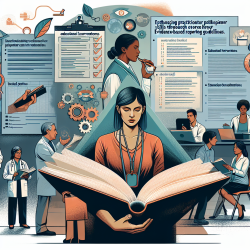Introduction
In the ever-evolving landscape of education, staying abreast of cutting-edge research is crucial for practitioners who strive to enhance their skills and improve student outcomes. A recent study titled Surface restructuring of a perovskite-type air electrode for reversible protonic ceramic electrochemical cells offers valuable insights that can be leveraged to drive innovation in educational practices, particularly in the realm of online therapy services provided by companies like TinyEYE.
Understanding the Research
The research explores the enhancement of electrochemical activity and durability of a perovskite-type air electrode, specifically Ba0.9Co0.7Fe0.2Nb0.1O3-δ (BCFN), through a water-promoted surface restructuring process. This innovative approach has demonstrated significant improvements in performance at intermediate temperatures, making it a promising development for energy conversion and storage technologies.
Implications for Practitioners
While the study primarily focuses on electrochemical cells, the underlying principles of innovation and adaptation can be applied to educational practices, especially in special education and online therapy. Here are some ways practitioners can benefit from the insights of this research:
- Embrace Innovation: Just as the study introduces a novel approach to enhance performance, educators should be open to adopting new methods and technologies that can improve teaching and therapy outcomes.
- Focus on Durability: The emphasis on durability in the study can be translated into creating sustainable educational practices that withstand the test of time and changing educational demands.
- Adaptation to Conditions: The research highlights the importance of adapting to specific operating conditions, a lesson that can be applied to tailor educational strategies to meet the diverse needs of students.
Encouraging Further Research
Practitioners are encouraged to delve deeper into the findings of this study and explore how similar principles can be applied to educational settings. By fostering a culture of continuous learning and research, educators can remain at the forefront of educational innovation.
Conclusion
In conclusion, the research on perovskite-type air electrodes provides a compelling example of how innovative thinking can lead to significant advancements. By drawing parallels between this study and educational practices, practitioners can enhance their skills and contribute to the evolution of education. To read the original research paper, please follow this link: Surface restructuring of a perovskite-type air electrode for reversible protonic ceramic electrochemical cells.










